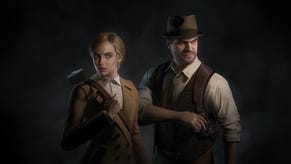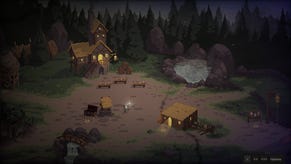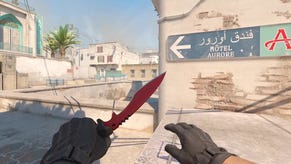Dwarf Fortress: The Song Of Onionbog, Pt 1
So, last week we finally gave MineCraft the love and attention it deserved. Since then I've received a bunch of emails telling me I should do Dwarf Fortress next. As in, it's another deeply unique PC indie game that we haven't done much coverage on, and it suits a diary perfectly.
You know what? You guys have me wrapped around your little finger. Presenting the Song of Onionbog, Part 1.
That's the May Green tileset I'm using, if anyone was wondering. I am using it because otherwise, Dwarf Fortress looks like this:
If you don't know about Dwarf Fortress, it's a freeware ASCII fantasy management game where you run a camp of dwarven settlers, with a twist. The twist is that the developers, Bay 12 Games, have never stopped adding to it since it came out more than 4 years ago and even today they show no sign of stopping. Understand that Dwarf Fortress was pretty complicated when it came out, so by now the game's depth is ludicrous. Check out this rudimentary features list. This game models everything from the weather, to wrestling, to madness and moods, to the entire history of your randomly generated world.
Oh, one other thing you should know about Dwarf Fortress. Nobody wins. Ever. The whole game basically amounts to a grand failure engine.
As of three days I hadn't played Dwarf Fortress, I'd only read about it. Let me tell you about my first six hours with Dwarf Fortress. My first six hours with Dwarf Fortress put me in a worse mood than I've been in for six months. Learning to play DF is absolutely as big a pain in the ass as everybody says it is. The interface has a tough job to do, bless it, but getting it to do what you want is like teaching a beetle to cook.
To top it all off the Dwarf Fortress wiki was down for the day, leaving me with nowt but these excellent tutorials and, when they failed me, typing maddened questions into Google with tears in my eyes. "somebody help for fucks sake dwarf fortress how do you irrigate fields".
But I'm better now. I know the basics. I can tell a dwarf to do a thing, and sometimes they even do it! Let's get started.
After you've had the game generate you a world, the first thing you do in Dwarf Fortress is pick a site for your settlers. This will likely be your first experience with the incredible language that permeates the game. Browsing, I lay eyes on The Named Jungle, The Pregnant Dune, The Swamp of Scenarios and The Dull Hill. You can start wherever you want though, anywhere from a frozen glacier to a haunted beach populated by murderous, amphibious zombie whales. Read that last sentence for me one more time. Amphibious zombie whales.
Since I struggle telling my dwarves where to leave their rubbish, I'll be choosing somewhere pleasant. Eventually I find a secluded, temperate spot, far away from my world's omnipresent goblin fortresses. It's at the mouth of a stream known as 'Clashchanced the Faint Yarns', up North in the Swamp of Treasures. So, yes. I'll be making my home in a swamp. Nevermind. I can stow my dignity- the place has plenty of good soil, lots of trees and other useful foliage, and the surroundings are supposedly "Calm" (as opposed to, say, "Untamed", "Sinister" or simply "Terrifying").
Let's prepare for the journey carefully.
Customising your settlers means deciding on your team's skills and supplies, although the game still randomly generates their physical and mental attributes. I decide to shunt lots of points into four of my seven dwarves, who I name Aleck, Kerion, Johon and Jiim. Any resemblance to people real or imagined is strictly coincidental.
Aleck: The fort's killer, Aleck is an axedwarf trained in fighting, dodging and kicking. I consider giving him a point in biting, but decide that would be overkill. Aleck will keep us safe. Will he keep us safe? It says here in Aleck's fine print that he has "a poor ability to manage social relationships". As the most dangerous dwarf in the fort, this is worrying.
Kerion: Our master miner and builder, Kerion will carve us our home. Smart, active and slow to tire, but with meagre creativity and a very bad sense of empathy, Kerion's noble sacrifice of placing himself at our society's coalface is probably best for everybody.
Johon: Mighty and resolute, yet distant, Johon's position of grower (and dabbling herbalist) is the most important in the whole fort. Without crops, there's no food or booze. Without any food or booze, dwarves have been known to get upset. Johon takes inspiration from cave crocodiles, which he admires for their strength.
Jiim: A fat, grumpy dwarf with braided hair, braided sideburns, a braided beard and a long moustache arranged in double-braids, Jiim's actually the most rounded and personable dwarf in the fort. He takes on the roles of mason, mechanic and trade negotiator. He will be the oil that keeps the fort running quietly.
This team is joined by two women, Tholtig (a carpenter) and Ingish (a brewer), and Tei, peasant miner and cook. I have some points left over and spend them on an extra bucket, as that seems like a practical thing to do (?), a couple of leather vests, and a cat and a kitten to take care of any vermin that live in the swamp.
Fooling around with the Fortress name generator, I come up with Anondudgoth. That's the Dwarvish. In English? Onionbog.
EMBARK!
"CEASE," commanded Jiim, bellowingly. The wagon rolled to a stop.
Jiim licked his fearsome lips. He supped the air. "This place," he said, "will be our home. There is a river, for water, and trees, for murdering. There is a mountain, into which we will strike. We will contrive our fortress here. And we will call it... Onionbog."
The others exchanged poison glances. "Who made you expedition leader, anyway," asked Aleck.
"SILENCE AXEDWARF," exclaimed portly Jiim. "MUST I THRASH YOUR BRAINS AGAINST THIS WAGON?"
As the map loads I discover, to no great surprise, that Jiim has been assigned the role of expedition leader. I have no idea what this means in a practical sense, but presumably if he died it would be a bad thing. I will definitely try and make sure he doesn't die.
This impossible promise made, I get to work laying down the basics. I'm good at the basics. Kerion and Tei collect the two crappy pickaxes we have on the wagon and start tunneling out some basic rooms. Johon immediately begins playing with the team's kitten, which acts as a reminder that I should set him to work foraging the local plants.
Let me help you out here. Know that the game shows you things from a top-down perspective. Now:
1: The tunnel entrance to our fortress.
2: Kerion!
3: Tei!
4: Understanding all these triangles is important. They represent upward slopes. An upside-down triangle means a downward slope. So, our fort is being dug horizontally into the steep incline of a hill.
5: A cat!
6: All of these are loose stones, yet to be cleared up because we have nowhere to put them.
Kerion and Tei mainly find olivine (the green stuff), but there's also some loamy sand (the yellow stuff), thank God. Loamy sand counts as soil, meaning I can use that space for my all-important underground farm. But before I can do that, I have to "muddy" it. Water it, basically. This is somewhat complicated.
"You want what dirty madness?" asked Tholtig.
"I want you to take that bucket," Jiim repeated, "and tip water on the floor of this chamber."
"BUT THAT IS DIRTY MADNESS," screeched Tholtig. Behind her, Tei nodded in stern agreement.
Jiim pinched the mottled flesh at the top of his nose and closed his eyes. He was in terrible pain. He turned to face Kerion, who stood nervously behind him, fingering the grubby pickaxe in his hands. "Alright," spoke Jiim. "Kerion. Go outside, climb the hill, and dig a chamber directly above this one. Then dig a pit in the floor. Tholtig? You must make a pond in this pit that Kerion will fabricate. Ponds are practical, and can be used for cave-carp or drownings. A fortress must have one."
The dwarves nodded their approval, and set to work immediately. Staying in the sandy chamber, Jiim watched as within the hour a hole had been punched in the ceiling, and soon buckets of water were coming splashing through.
Jiim stroked his belly, and he worried. It would be a long year.
This is genuinely the simplest method of irrigation in Dwarf Fortress. Telling your dwarves to create a pond in the room directly above your farms, thereby soaking the Earth, then when the ground is good and sodden you tell them to stop and let the water evaporate. That's the kind of game we're dealing with here.

More basics. It starts to rain, so I get everyone to shift our food supplies indoors so they don't start rotting. Kerion and Tei dig some downward staircases, and once they're down there they begin hollowing out what will become Jiim's immense stone storage chamber and masonry workshop. I spot skilled miner Kerion taking a nap on the floor while Tei pushes on with the work. Rather than thinking him lazy, I imagine he's just tired himself out.
Tholtig gets to work chopping down most of the trees around our fort's entrance, then uses the lumber to throw up an outdoor carpenter's workshop. Here, she begins producing beds, which I use to create a crude barracks for everybody. No more napping on the floor, lads, it's bad for morale.
During all this the cats get on with giving the local wildlife a hard time. Scattered around our fort are the corpses of dragonflies, rats, toads and tiny lizards. I designate a refuse dump outside our entrance, hidden behind a hillock. Corpses and filth left inside the cramped confines of your fortress create 'miasma', which makes dwarves miserable. This can graduate to being lethal if, say, your fortress is also under siege, and the dwarves trapped inside start losing their grip on reality.

Alone in the peace and quiet of his masonry chamber, Jiim sets to work chiselling furniture for the fort. That's not me getting fruity with my descriptions. Dwarf Fortress models noise and boistrousness, with workshops and bedrooms not functioning as well if you put them next to, say, a dining hall. Which is what I build next, actually. Excavating the dining hall-to-be, the boys make a discovery.
Tei heaved his pickaxe into the rock, and, upon pulling it back, found a strange stone staring out at him from the crack.
"Kerion come and look at this strange stone that stares out at me from the crack!" Tei cried.
Kerion marched over to him, wiping his perspiring armpits on Tei's shoulder, which was Kerion's privilege and his duty as chief miner. "Tis a jelly opal," said Kerion.
"A jelly opal," said Tei. "That is too strange!"
And Kerion turned to face him then, and Tei saw in Kerion's eyes that same eternal stillness of the stone itself, and Kerion delivered Tei a powerful blow that nobody would ever see. And in that moment, Tei understood. He never disrespected the Earth again.
With the dining room hollowed out I get everybody hauling Jiim's stone tables and chairs up the stairs to set them in place, which has got to be a massive pain in the ass but my dwarves don't grumble. Aleck is the first person to use the new dining room, sitting alone at a table with a meal of dried horse intestine.
Outside, the rain clears. Inside, the last of the water in our underground farm has almost evaporated. Soon it'll be time for Johon to plant his crop of Plump Helmet mushrooms, and then we can set up a kitchen, and a still to make mushroom booze.
Perhaps Onionbog will be alright after all.
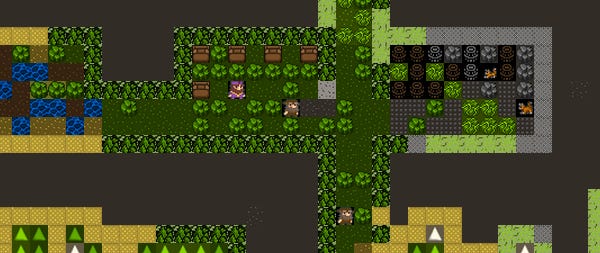









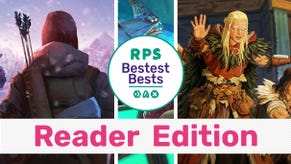

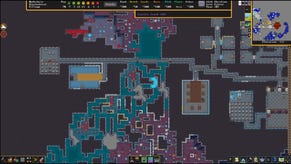
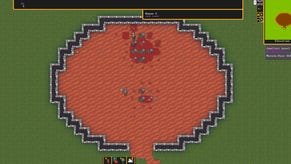
.jpg?width=291&height=164&fit=crop&quality=80&format=jpg&auto=webp)

